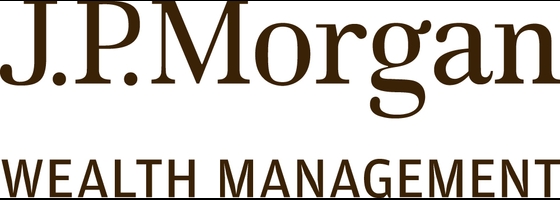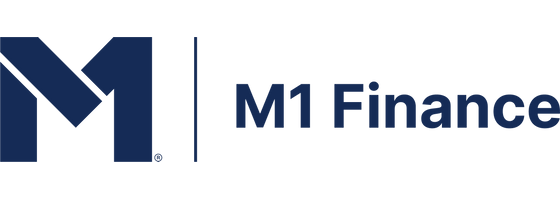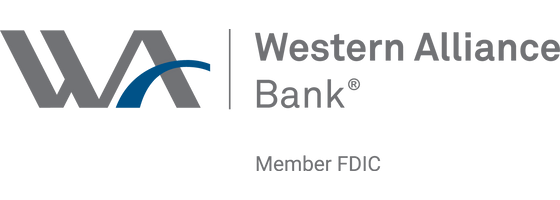Savings vs. Investing: Differences & How to Choose


Our evaluations and opinions are not influenced by our advertising relationships, but we may earn a commission from our partners’ links. This content is created by TIME Stamped, under TIME’s direction and produced in accordance with TIME’s editorial guidelines and overseen by TIME’s editorial staff. Learn more about it.
Setting aside money for the future through saving and investing can help you reach important goals, such as retirement, buying a home, or sending your kids to college. But while saving and investing sound like the same thing, they are quite different in terms of risk, returns, cost, and other factors. In this article, we explore the key differences between savings and investing, the pros and cons of each, and when you should focus on one or the other.
The following chart highlights the key differences between saving and investing. While many people use these terms interchangeably, they are quite different when it comes to reaching your financial goals.
| Saving | Investing | |
|---|---|---|
Where | Banks and credit unions | Brokerage firms and mutual fund companies |
Interest rates | High-yield savings accounts may offer 4% or higher | Historical average returns are 8% to 10% |
Type of earnings | Interest income | Dividends and capital gains |
Minimum investment | Varies, but many can start with $1 | Varies, but many can start with $1 |
Safety | Most savings covered through FDIC insurance | Investments are not guaranteed, can lose value |
Taxes | Ordinary income taxes | Qualified dividends and long-term capital gains receive favorable tax treatment |
Savings accounts offer numerous benefits to help you reach your financial goals. These include fixed interest rates and Federal Deposit Insurance Corporation (FDIC) insurance that protects your money in case the bank fails.
Bank account holders are eligible for FDIC insurance up to $250,000 on their balances at each bank. Additionally, they can title their accounts in specific ways to get even more insurance coverage. For example, if you have one account in your name and a joint account with your spouse, each account receives $250,000 in coverage for a total of $500,000.
By spreading your accounts among different banks, you can get even more coverage for your money. Some banks offer certificate of deposit account registry service (CDARS), which allows you to deposit your money at one bank and then spread it among several banks to maximize your FDIC coverage up to $50 million.
Savings accounts offer a stated interest rate on their balances. These rates are impacted by economic conditions, the prime rate, and a bank's need for more deposits. While these rates may fluctuate over time, they are relatively consistent and do not fluctuate daily like the stock market.
While many savings accounts from traditional banks have low interest rates, a high-yield savings account (HYSA) from an online bank generally offers much higher rates. Some HYSAs have no monthly fees or minimum balance requirements, which makes them ideal for every type of saver.
While savings accounts offer many benefits, there are also downsides, such as monthly fees and minimum balance requirements.
Traditional savings accounts can have a monthly service charge or require a minimum balance to waive the fee. If you’re charged a monthly fee, it could be more than the interest you’ve earned. Seek out savings accounts that do not charge a monthly fee or where you can easily meet its minimum balance requirements to avoid fees.
Some banks require you to provide a minimum opening deposit to open a savings account. Banks may also require you to maintain a minimum or average daily balance to avoid fees. A daily balance requirement means you'll be charged a fee if your balance drops below that limit on any day during the month.
An average daily balance is better for fluctuating balances because you'll avoid fees as long as the average is above that limit.
Savings account interest rates can also be affected by your account balance. Some accounts have tiered rates based on your balances, while others only offer higher rates on balances below or above a set amount. For example, a savings account may offer 4% on the first $5,000 in your account, while another account offers its best rates to customers with at least a $10,000 balance.
Interest rates on savings accounts tend to be small, and they’re often less than the inflation rate. Online high-yield savings and money market accounts may have higher interest rates than savings accounts offered by traditional brick-and-mortar banks and credit unions. But even higher interest savings accounts provide lower returns than investments over the long term.
Additionally, the interest earned on savings accounts is taxable at ordinary income rates, reducing earnings.
Investing is one of the best ways to build long-term wealth. Stock investors typically earn income in two ways: capital gains and dividends.
One of the main benefits of investing is the potential for the asset to increase in value. Until the asset is sold, there are no capital gains taxes on the appreciation. The only exception is an exchange-traded fund (ETF) or a mutual fund, where you may owe capital gains on the underlying assets that have been sold. Investors can avoid capital gains taxes by donating appreciated assets to charity or with a "stepped-up cost basis" when they die.
When you sell an investment that has gained value, you may owe taxes on the appreciation. These taxes are known as “capital gains.” Tax rates on capital gains vary depending on how long you've owned the investment. If you've held the asset for a year or less, the gains are taxed at ordinary income rates. For assets held long term, you'll pay lower taxes. Long-term capital gains rates range from 0% to 20% based on your income and tax-filing status.
Dividends are the share of earnings that a company distributes to its owners. In a publicly traded company, the owners are the shareholders. Each share of stock you own directly or through a mutual fund or an ETF represents an ownership stake in the company. Dividends are typically distributed quarterly or annually.
Qualified dividends receive special tax treatment, meaning they're taxed at lower rates. Depending on your income, qualified dividend tax rates range from 0% to 20%. Non-qualified or "ordinary" dividends are taxed at the same income tax rates as income from your job.
When evaluating investment options, past performance should not be considered an indicator of future returns. In fact, a major downside of investing is that there are no guaranteed returns. In some cases, you may even lose money.
When it comes to investing, past performance does not guarantee future results. In other words, just because an investment has gone up in the past does not mean it will continue to increase in value. Numerous factors influence an investment's value, including economic trends, competition, government regulations, and consumer preferences. A company's financial performance and future expectations also play a large role in its stock value.
A stock investment could lose all of its value (or a majority of it) depending on the company's future expectations. You can reduce this risk by diversifying your investment portfolio so you don't lose all your money if one investment fails. Investors diversify by owning multiple stocks or by purchasing mutual funds and ETFs. Mutual funds and ETFs are popular because they allow investors to own numerous investments through a single fund.
You may trigger a tax bill if you need money from your investments. Paying taxes could require you to sell more of your investments to cover the added expense. When you've held the asset for a year or less, you're taxed at ordinary income rates. Holding off until after you've owned the investment for more than a year could reduce the amount of taxes you owe.
When an investment has lost value, you'll benefit from a capital loss. These losses can offset capital gains from the sale of other assets. You can use $3,000 per year to reduce your ordinary income if you have more capital losses than gains. Any leftover losses can be carried forward to future years. Some investors strategically "harvest" their losses yearly to reduce their taxes owed. This is known as tax loss harvesting.
Choosing between saving and investing often depends on when you'll need the money and your risk tolerance. The stock market can fluctuate daily and historically fluctuates 15% throughout the year. It is impossible to predict how long market fluctuations will last, as so many factors influence them. If you need to withdraw money when the market is down, you'll have to sell at a loss.
Investors should only invest in the stock market if they have a longer time horizon. Typically, this means you won't need the money for at least five to 10 years or more. Common investing goals include retirement or college savings for a young child.
If you’re ready to invest long term, you’ll need to decide if you would rather have a human advisor manage your investments or invest on your own through an online broker.
There are many benefits to working with a financial advisor, such as a certified financial planner (CFP). These trained professionals can advise you on various financial needs, such as retirement, tax, and estate planning.

INVESTMENT AND INSURANCE PRODUCTS ARE: NOT A DEPOSIT • NOT FDIC INSURED • NO BANK GUARANTEE • MAY LOSE VALUE
J.P. Morgan Wealth Management is a business of JPMorgan Chase & Co., which offers investment products and services through J.P. Morgan Securities LLC (“J.P. Morgan”), a registered broker dealer and investment adviser, member FINRA and SIPC. TIME Stamped is a publisher of J.P. Morgan, (“Publisher”). The Publisher will receive compensation from J.P. Morgan if you provide contact details to speak with a J.P. Morgan representative. Compensation paid to the Publisher will be up to $500 per completed contact form. Compensation provides an incentive for the Publisher to endorse J.P. Morgan and therefore information, opinions, or referrals are subject to bias. J.P. Morgan and the Publisher are not under common ownership or otherwise related entities, and each are responsible for their own obligations. Investing involves market risk, including possible loss of principal, and there is no guarantee that investment objectives will be achieved.
Another option is to go the self-directed route and manage your own investments through an online brokerage account. Online brokers offer a combination of convenience and affordability, allowing you to manage your portfolio from the comfort of your living room at a very low cost. Some even offer access to a human advisor for the times when you need some extra help.
However, not all online brokers are created equal, and many cater to different types of investors. Here are a few factors you should compare before opening a brokerage account.
One of the best online brokers is M1 Finance. It offers passive investing with more than 6,000 stocks and ETFs from which to choose. There are no commission, trading, or management fees, and you can rebalance your portfolio with one click. M1 Finance also offers a HYSA, a rewards credit card, and margin loans.

Up to $500 when signing up and earn up to $10,000 when transferring your brokerage account to M1 Finance by by November 15, 2023. T&C apply.
While savings accounts have lower returns, they do not fluctuate in value and offer FDIC insurance. People who need to access their money in the short term should deposit it in a HYSA or a certificate of deposit (CD) that matches their expected withdrawal date. Examples include saving for a new car, a home down payment, or an upcoming vacation.
A good savings account allows you to earn a high rate of interest while minimizing fees. You can access the account as needed and easily add more when you have extra money. Here are a few factors to consider when comparing savings accounts.

When choosing between saving and investing, the best answer is that you should do both. Savings accounts are for money you may need in the short term or in an emergency. They offer lower but guaranteed interest rates and FDIC insurance.
Investing is for long-term goals that require financial growth through higher returns, such as retirement and college tuition. Unlike savings amounts, investment values will fluctuate over the short term, but they usually increase over the long term.
A good rule of thumb is that people should have three to six months of income saved in an emergency fund. This way, they can cover bills in case they get sick, injured, or laid off from their job. Another rule of thumb is to invest 15% of your income in a well-diversified retirement account.
Doubling your money quickly without taking on risk is impossible. Typically, investments offer higher returns because there is a greater risk of losing money. You can increase your returns while minimizing risk by investing in a well-diversified portfolio and shopping for a savings account with higher interest rates and lower fees.
The information presented here is created by TIME Stamped and overseen by TIME editorial staff. To learn more, see our About Us page.



